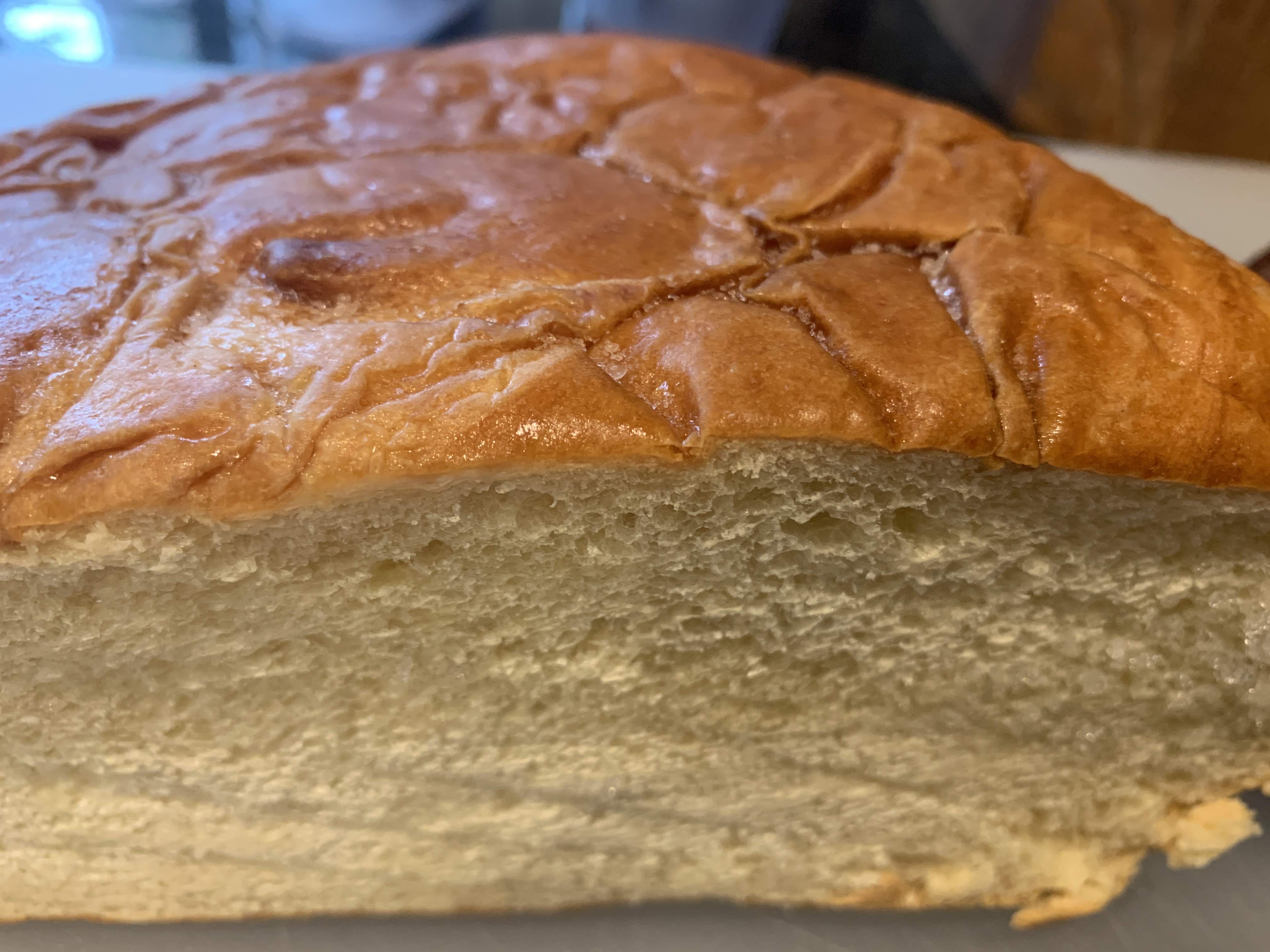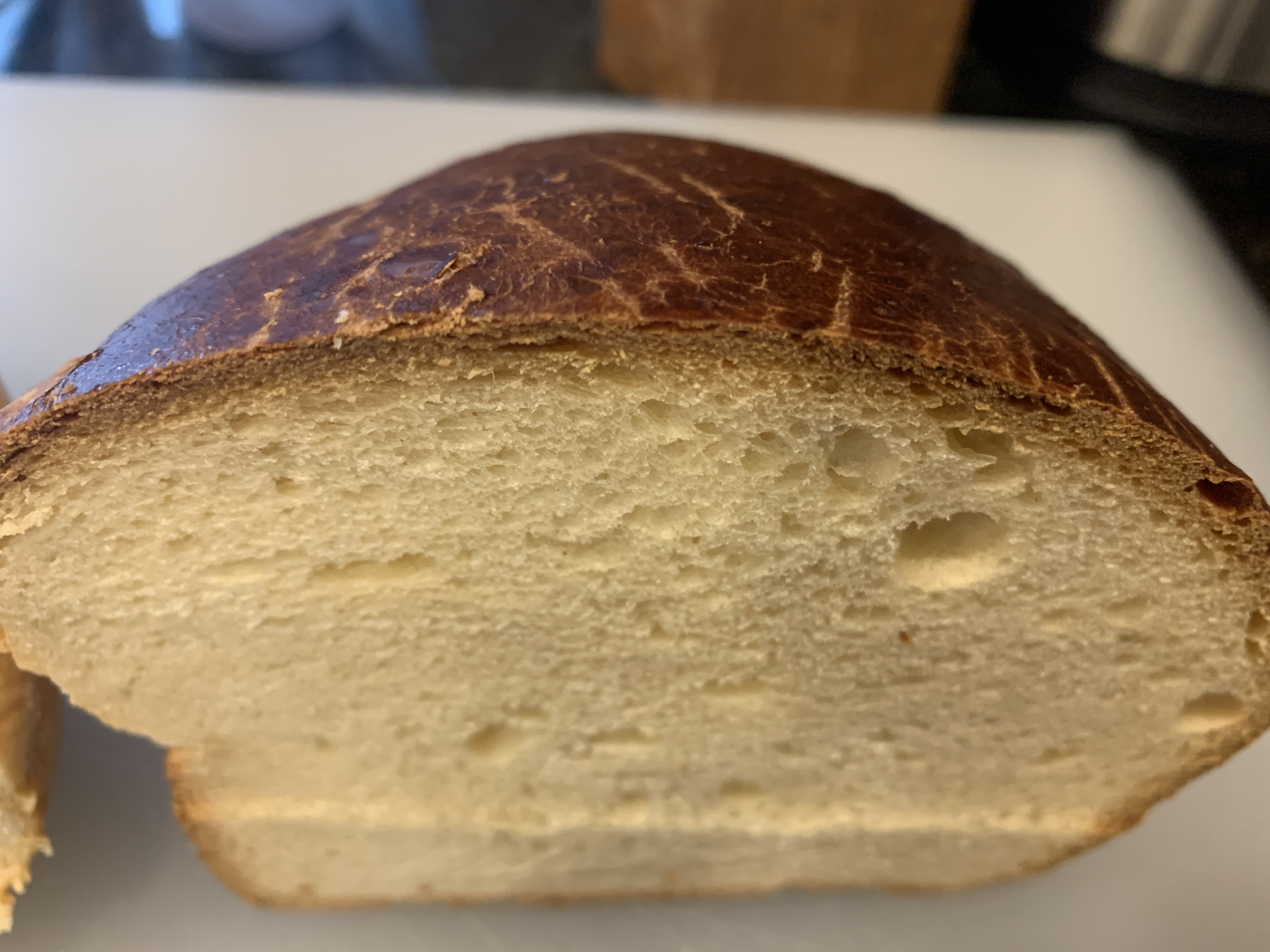Replicating the thin, soft crust of Portuguese Sweet Bread
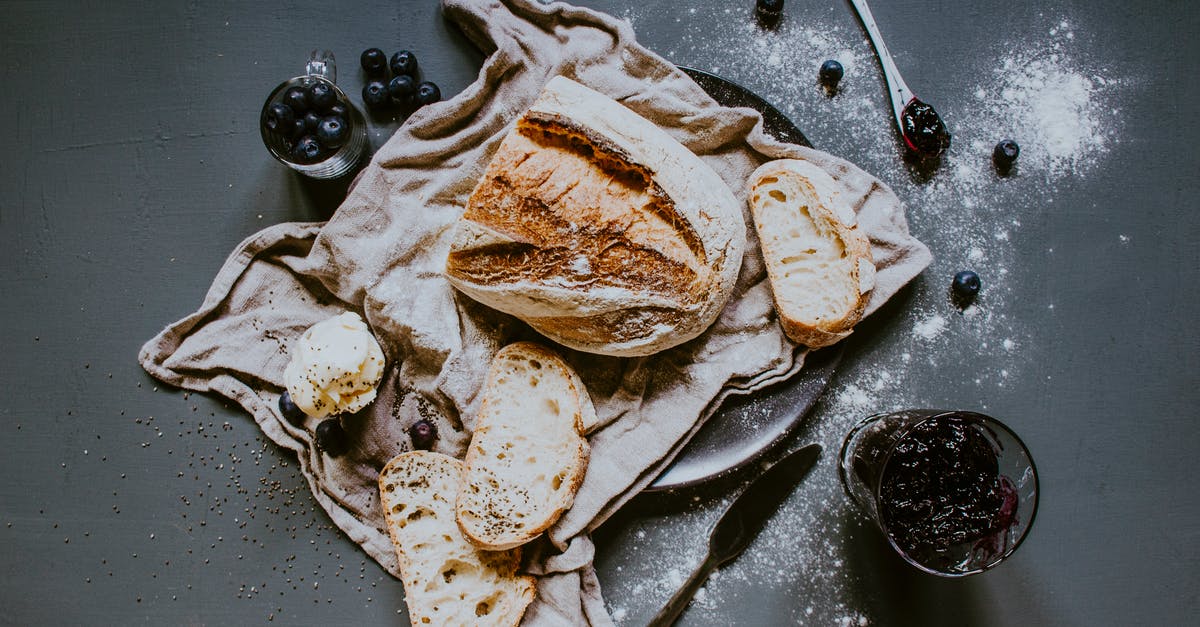
When I try to replicate Portuguese Sweet Bread (Massa Sovada) from places like Fall River, Massachusetts, the crust on my bread comes out thick and hard, whereas the bakery versions have a thin, soft crust that you can almost peel off, and there are noticeable wrinkle lines.
Here's the bakery version:
And here's mine, with the thick, hard crust:
I've looked at several recipes and most are very similar. Here's the one I'm using:
- 1/4 cup warm water
- 1/2 cup whole milk
- 1/4 cup butter, room temp
- 2 eggs
- 2 teaspoons grated lemon peel
- 3/4 cup sugar
- 1/2 teaspoon salt
- 3 1/2 cups flour
- 1 package (2 1/4 teaspoons) instant or active dry yeast
- Egg glaze: 1 egg yolk beaten with 1 tablespoon milk
Things I've tried:
- Changing the flour: I've tried bread flour and all purpose.
- Changing the cooking temperature: I've tried 330F (fan-assisted) as well as a combination of temperatures: 11 min. at 320F, 30 min. at 285F, 65 min. at 250F.
- Egg glaze: with and without.
- Steam after baking: I tried covering the loaf with a bowl until it cooled.
But nothing changed the crust much at all.
The wrinkles on top look like maybe it was put into a plastic bag right out of the oven, and the steam caused the wrinkles. But my test with covering the loaf with a bowl didn't change the hard crust at all.
There's a similar post with suggestions such as using a Pullman (covered) loaf pan but it seems unlikely to me that the bakery is doing that because of the shape of the bread and the type of pan I know they use (which can be seen here). I have wondered if covering it with foil for part of the time might help, but I'd be surprised if the bakery is doing that. The post also has suggestions to use steam (which seems like it'll have the opposite effect) and to user lower temperatures, which I followed exactly using the three temperatures I mentioned above. For those reasons, I don't believe the post answers my question:
How bakeries do a soft crust breads and making the same at home will result in a crisp crust?
Thanks for any other ideas!
Best Answer
I'm the OP. After a lot of experimentation and reading, I've found that the solution is to use steam. A lot of articles talk about how steam is necessary for a hard crust so that made me think it was the opposite of what I needed.
I learned that steam does several things, including keeping the top surface soft for longer so the bread can expand further, preventing the crust from burning, and helping the starches become a gel that turns into a brittle and glossy shell. But in almost all cases, recipes call for steam to be used only during the first portion of the bake, and then removed to allow a hard crust to be formed in the latter part after the bread has finished expanding.
I did several experiments where I added steam for a little bit longer each time, finally just using steam for the entire bake. That's when I finally got the ultra-soft, wrinkly crust like in Portuguese Sweet Bread. After going back to read the article mentioned above, I realized that its suggestion of adding a tray of boiling water to the bottom of the oven at the beginning of baking was what I needed, but to also keep the water in the oven for the entire bake.
Pictures about "Replicating the thin, soft crust of Portuguese Sweet Bread"
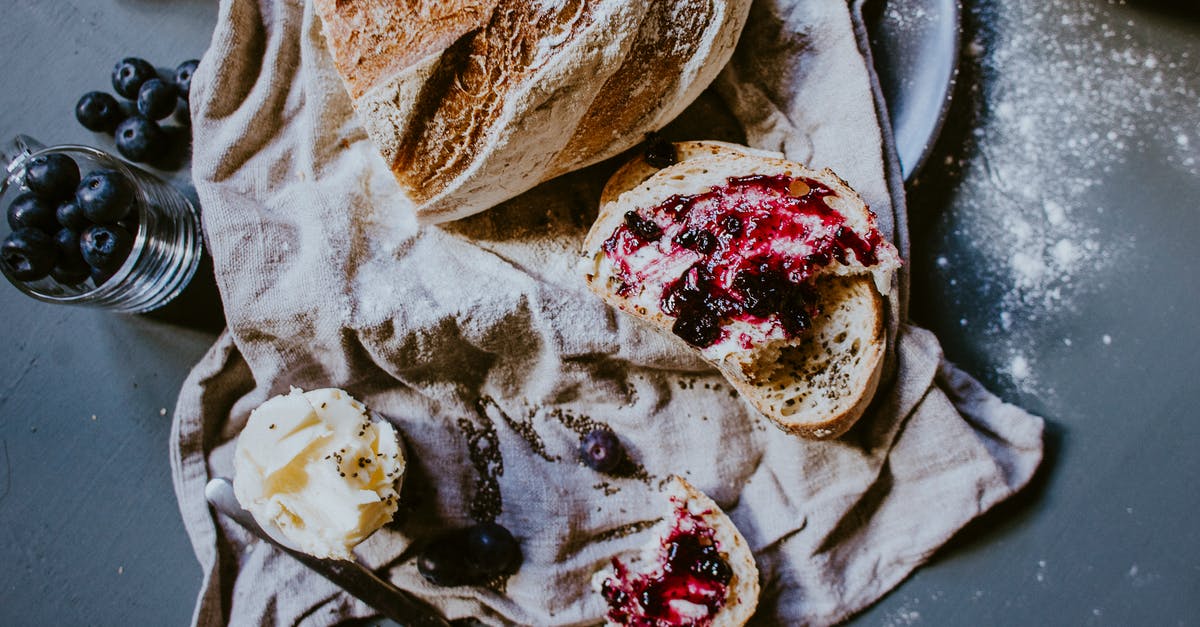
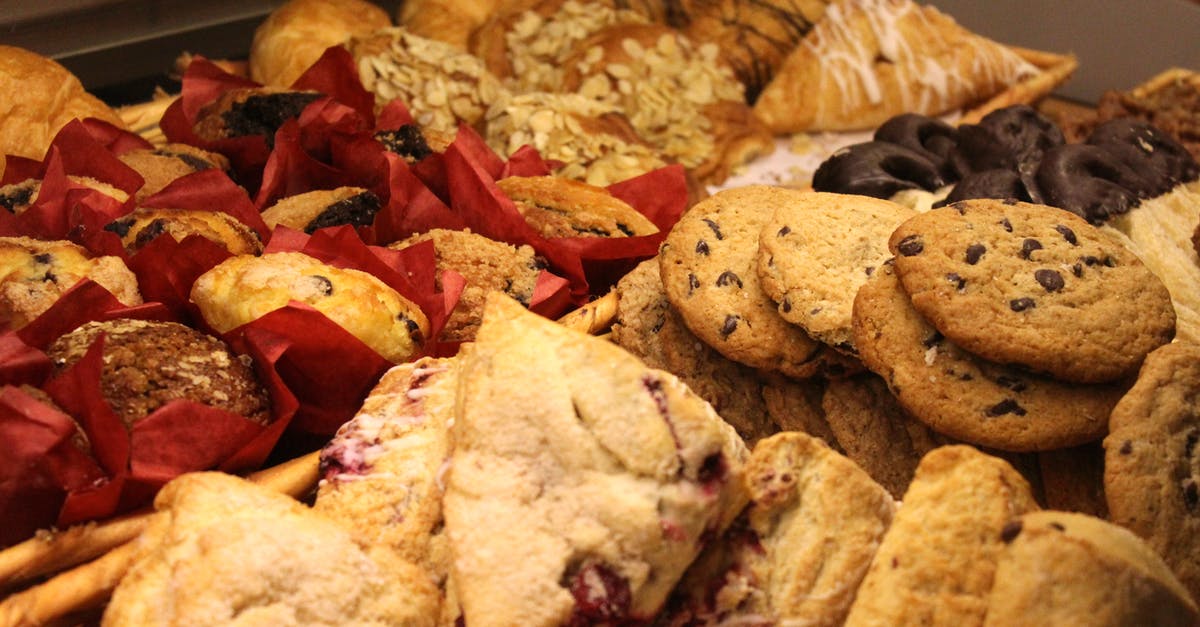

Quick Answer about "Replicating the thin, soft crust of Portuguese Sweet Bread"
- 1/4 cup warm water.
- 1/2 cup whole milk.
- 1/4 cup butter, room temp.
- 2 eggs.
- 2 teaspoons grated lemon peel.
- 3/4 cup sugar.
- 1/2 teaspoon salt.
- 3 1/2 cups flour.
How do I make my bread crust soft and thin?
Here are the best ways to ensure you get a thinner softer crust on your sourdough bread.How do you make a soft crust for bread?
Place the dough in the prepared pan, cover it loosely with greased plastic wrap, and allow it to rise in a warm place until doubled in size (30 to 45 minutes). Preheat the oven to 350 degrees F. Uncover the dough and bake for 40 to 45 minutes, or until the loaf sounds hollow when lightly tapped.How do you make thin crust on bread?
In some breads, a thin crust can be achieved by brushing the dough with oil and baking at a high temperature. Wetter doughs will also frequently have more crisp crusts. At restaurants where the bread is really crackly, there's also a chance that the bread had been frozen.How do you make the outer layer of bread softer?
How can I get a soft crust on my bread?Learn how to make Portuguese Sweet Bread (massa sovada / pão doce)
More answers regarding replicating the thin, soft crust of Portuguese Sweet Bread
Answer 2
Keep that skin surface moist, bakers often spray some water on the bread as it cooks, this makes it tender flaky and soft. Hard crust is for lack of a better word, dry/burnt
Sources: Stack Exchange - This article follows the attribution requirements of Stack Exchange and is licensed under CC BY-SA 3.0.
Images: Flora Westbrook, Flora Westbrook, Leigh Patrick, Maria Orlova

